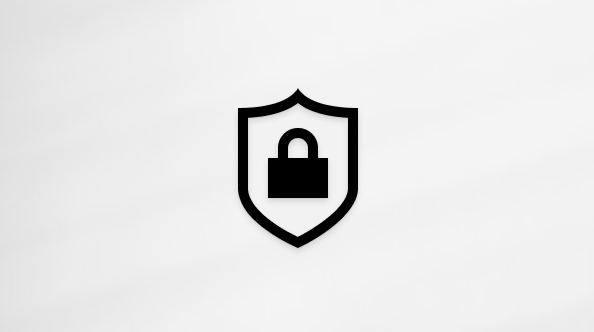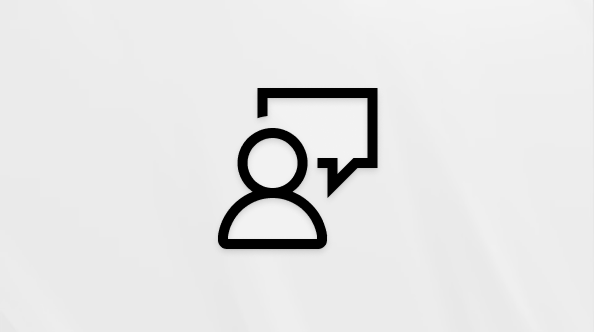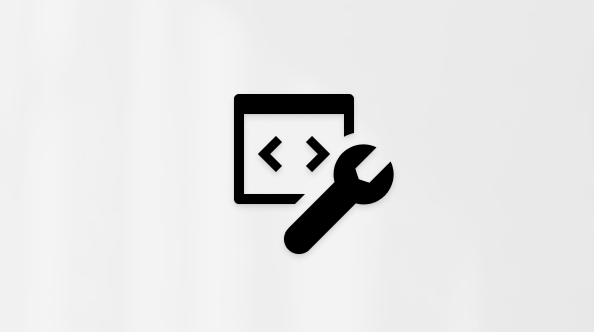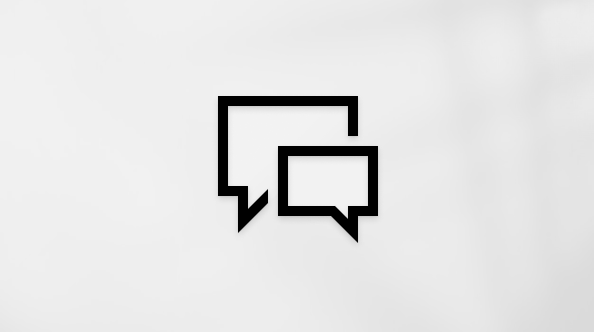Surface storage options and hard drive sizes
Pre-installed software, apps, and updates use a significant amount of the internal disk space on your Surface.
How much disk space does the device have?
The amount of free disk space available for your music, photos, videos, and other content depends on which Surface you have. The available space may also vary by country or region depending on which languages and apps are pre-installed.
Note: 1 GB = 1 billion bytes
|
Surface Duo |
Available disk space |
|---|---|
|
128 GB |
109 GB |
|
256 GB |
234 GB |
|
Surface Book 3 15" |
Available disk space |
|---|---|
|
i7 / 16 GB / 256 GB |
200 GB |
|
i7 / 32 GB / 1 TB |
906 GB |
|
i7 / 32 GB / 512 GB |
429 GB |
|
i7 / 32 GB / 2 TB |
1,860 GB |
|
Surface Book 3 13" |
Available disk space |
|---|---|
|
i5 / 8 GB / 256 GB |
204 GB |
|
i7 / 16 GB / 256 GB |
200 GB |
|
i7 / 32 GB / 512 GB |
430 GB |
|
i7 / 32 GB / 1 TB |
906 GB |
|
Surface Book 2 |
Available disk space |
|---|---|
|
i5 / 8 GB / 128 GB |
94 GB |
|
i5 / 8 GB / 256 GB |
214 GB |
|
i5 / 16 GB / 256 GB |
208 GB |
|
i7 / 8 GB / 256 GB |
213 GB |
|
i7 / 16 GB / 256 GB |
208 GB |
|
i7 / 16 GB / 512 GB |
447 GB |
|
i7 / 16 GB / 1 TB |
924 GB |
|
Surface Book / Surface Book with Performance Base |
Available disk space |
|---|---|
|
i5 / 128 GB |
99 GB |
|
i5 / 256 GB |
220 GB |
|
i7 / 256 GB |
218 GB |
|
i7 / 512 GB |
451 GB |
|
Surface Go 4 (Windows 11) |
Available disk space |
|---|---|
|
N200 / 8 GB / 64 GB |
30 GB |
|
N200 / 8 GB / 128 GB |
78 GB |
|
N200 / 8 GB / 256 GB |
201 GB |
|
Surface Go 4 (Windows 10) |
Available disk space |
|---|---|
|
N200 / 8 GB / 64 GB |
27 GB |
|
N200 / 8 GB / 128 GB |
73 GB |
|
N200 / 8 GB / 256 GB |
200 GB |
|
Surface Go 3 (Windows 11) |
Available disk space |
|---|---|
|
i3 / 4 GB / 64 GB |
32 GB |
|
i3 / 8 GB / 128 GB |
77 GB |
|
Pentium / 4 GB / 64 GB |
30 GB |
|
Pentium / 8 GB / 128 GB |
77 GB |
|
Surface Go 3 (Windows 10) |
Available disk space |
|---|---|
|
i3 / 4 GB / 64 GB |
30 GB |
|
i3 / 8 GB / 128 GB |
74 GB |
|
Pentium / 4 GB / 64 GB |
28 GB |
|
Pentium / 8 GB / 128 GB |
73 GB |
|
Surface Go 2 |
Available disk space |
|---|---|
|
m3 / 4 GB / 64 GB |
27 GB |
|
m3 / 8 GB / 128 GB |
75 GB |
|
m3 / 8 GB / 256 GB |
201 GB |
|
Pentium / 4 GB / 64 GB |
28 GB |
|
Pentium / 8 GB / 128 GB |
74 GB |
|
Surface Go |
Available disk space |
|---|---|
|
64 GB |
44 GB |
|
128 GB |
97 GB |
|
Surface Laptop Go 3 (Windows 11) |
Available disk space |
|---|---|
|
i5 / 8 GB / 128 GB |
77 GB |
|
i5 / 8 GB / 256 GB |
194 GB |
|
i5 / 16 GB / 256 GB |
198 GB |
|
i5 / 16 GB / 512 GB |
438 GB |
|
Surface Laptop Go 3 (Windows 10) |
Available disk space |
|---|---|
|
i5 / 8 GB / 256 GB |
198 GB |
|
i5 / 16 GB / 256 GB |
198 GB |
|
Surface Laptop Go 2 (Windows 11) |
Available disk space |
|---|---|
|
i5 / 4 GB / 128 GB |
80 GB |
|
i5 / 8 GB / 128 GB |
76 GB |
|
i5 / 8 GB / 256 GB |
197 GB |
|
i5 / 16 GB / 256 GB |
191 GB |
|
Surface Laptop Go 2 (Windows 10) |
Available disk space |
|---|---|
|
i5 / 4 GB / 128 GB |
83 GB |
|
i5 / 8 GB / 256 GB |
193 GB |
|
i5 / 16 GB / 256 GB |
189 GB |
|
Surface Laptop Go |
Available disk space |
|---|---|
|
i5 / 4 GB / 64 GB |
29 GB |
|
i5 / 8 GB / 128 GB |
75 GB |
|
i5 / 8 GB / 256 GB |
195 GB |
|
i5 / 16 GB / 256 GB |
189 GB |
|
Surface Laptop SE |
Available disk space |
|---|---|
|
N4020 / 4 GB / 64 GB |
32 GB |
|
N4120 / 8 GB / 128 GB |
85 GB |
|
Surface Laptop Studio 2 (Windows 11) |
Available disk space |
|---|---|
|
i7 / 16 GB / 512 GB |
431 GB |
|
i7 / 32 GB / 1 TB |
883 GB |
|
i7 / 64 GB / 1 TB |
879 GB |
|
i7 / 64 GB / 2 TB |
1839 GB |
|
Surface Laptop Studio 2 (Windows 10) |
Available disk space |
|---|---|
|
i7 / 16 GB / 512 GB |
424 GB |
|
i7 / 64 GB / 1 TB |
882 GB |
|
Surface Laptop Studio (Windows 11) |
Available disk space |
|---|---|
|
i5 / 16 GB / 256 GB |
198 GB |
|
i7 / 16 GB / 512 GB |
438 GB |
|
i7 / 32 GB / 1 TB |
906 GB |
|
i7 / 32 GB / 2 TB |
1860 GB |
|
Surface Laptop Studio (Windows 10) |
Available disk space |
|---|---|
|
i5 / 16 GB / 256 GB |
198 GB |
|
i7 / 32 GB / 1 TB |
905 GB |
|
i7 / 32 GB / 2 TB |
1858 GB |
|
Surface Laptop (7th Edition) |
Available disk space |
|---|---|
|
Snapdragon® X Plus C10 / 16 GB / 256 GB |
182 GB |
|
Snapdragon® X Plus C10 / 16 GB / 512 GB |
420 GB |
|
Snapdragon® X Elite C12 / 16 GB / 1 TB |
901 GB |
|
Snapdragon® X Elite C12 / 32 GB / 1 TB |
890 GB |
|
Surface Laptop 6 for Business |
Available disk space |
|---|---|
|
Intel® Core™ Ultra 5 / 8 GB / 256 GB |
194 GB |
|
Intel® Core™ Ultra 5 / 16 GB / 256 GB |
192 GB |
|
Intel® Core™ Ultra 7 / 16 GB / 256 GB |
191 GB |
|
Intel® Core™ Ultra 7 / 16 GB / 512 GB |
435 GB |
|
Intel® Core™ Ultra 7 / 16 GB / 1 TB |
914 GB |
|
Intel® Core™ Ultra 7 / 32 GB / 256 GB |
191 GB |
|
Intel® Core™ Ultra 7 / 32 GB / 512 GB |
427 GB |
|
Intel® Core™ Ultra 7 / 32 GB / 1 TB |
904 GB |
|
Intel® Core™ Ultra 7 / 64 GB / 1 TB |
886 GB |
|
Surface Laptop 5 (Windows 11) |
Available disk space |
|---|---|
|
i5 / 8 GB / 256 GB |
193 GB |
|
i5 / 8 GB / 512 GB |
430 GB |
|
i5 / 8 GB / 256 GB |
187 GB |
|
i5 / 16 GB / 512 GB |
426 GB |
|
i7 / 8 GB / 256 GB |
193 GB |
|
i7 / 8 GB / 512 GB |
430 GB |
|
i7 / 16 GB / 256 GB |
187 GB |
|
i7 / 16 GB / 512 GB |
426 GB |
|
i7 / 32 GB / 1 TB |
892 GB |
|
Surface Laptop 5 (Windows 10) |
Available disk space |
|---|---|
|
i5 / 8 GB / 256 GB |
194 GB |
|
i5 / 8 GB / 512 GB |
431 GB |
|
i5 / 16 GB / 256 GB |
189 GB |
|
i5 / 16 GB / 512 GB |
427 GB |
|
i7 / 8 GB / 256 GB |
194 GB |
|
i7 / 8 GB / 512 GB |
431 GB |
|
i7 / 16 GB / 256 GB |
189 GB |
|
i7 / 16 GB / 512 GB |
427 GB |
|
i7 / 32 GB / 1 TB |
893 GB |
|
Surface Laptop 4 |
Available disk space |
|---|---|
|
i5 / 8 GB / 256 GB |
193 GB |
|
i5 / 8 GB / 512 GB |
433 GB |
|
i5 / 16 GB / 512 GB |
427 GB |
|
i7 / 8 GB / 256 GB |
194 GB |
|
i7 / 8 GB / 512 GB |
431 GB |
|
i7 / 16 GB / 256 GB |
189 GB |
|
i7 / 16 GB / 512 GB |
427 GB |
|
i7 / 32 GB / 1 TB |
897 GB |
|
Ryzen 5 / 8 GB / 256 GB |
193 GB |
|
Ryzen 5 / 16 GB / 256 GB |
188 GB |
|
Ryzen 7 / 8 GB / 256 GB |
193 GB |
|
Ryzen 7 / 8 GB / 512 GB |
433 GB |
|
Ryzen 7 / 16 GB / 512 GB |
427 GB |
|
Surface Laptop 3 15” |
Available disk space |
|---|---|
|
Ryzen 5 / 8 GB / 128 GB |
90 GB |
|
Ryzen 5 / 8 GB / 256 GB |
208 GB |
|
Ryzen 5 / 16 GB / 256 GB |
204 GB |
|
Ryzen 5 / 16 GB / 512 GB |
443 GB |
|
Surface Laptop 3 13.5” |
Available disk space |
|---|---|
|
i5 / 8 GB / 128 GB |
88 GB |
|
i5 / 8 GB / 256 GB |
206 GB |
|
i7 / 16 GB / 256 GB |
202 GB |
|
i7 / 16 GB / 512 GB |
441 GB |
|
i7 / 16 GB / 1 TB |
918 GB |
|
Surface Laptop 2 |
Available disk space |
|---|---|
|
i5 / 8 GB / 128 GB |
94 GB |
|
i5 / 8 GB / 256 GB |
213 GB |
|
i5 / 16 GB / 256 GB |
201 GB |
|
i7 / 8 GB / 256 GB |
213 GB |
|
i7 / 16 GB / 512 GB |
447 GB |
|
i7 / 16 GB / 1 TB |
922 GB |
|
Surface Laptop (1st Gen) |
Available disk space |
|---|---|
|
i5 / 128 GB |
100 GB |
|
i5 / 256 GB |
217 GB |
|
i7 / 512 GB |
454 GB |
|
i7 / 1 TB |
926 GB |
|
Surface Pro X |
Available disk space |
|---|---|
|
SQ1 / 8 GB / 128 GB |
88 GB |
|
SQ1 / 8 GB / 256 GB |
206 GB |
|
SQ2 / 16 GB / 256 GB |
192 GB |
|
SQ2 / 16 GB / 512 GB |
440 GB |
|
Surface Pro (11th Edition) |
Available disk space |
|---|---|
|
Snapdragon® X Plus C10 / 16 GB / 256 GB |
184 GB |
|
Snapdragon® X Plus C10 / 16 GB / 512 GB |
416 GB |
|
Snapdragon® X Elite C12 / 16 GB / 1 TB |
893 GB |
|
Snapdragon® X Elite C12 / 32 GB / 1 TB |
898 GB |
|
Surface Pro 10 for Business |
Available disk space |
|---|---|
|
Intel® Core™ Ultra 5 / 8 GB / 256 GB |
194 GB |
|
Intel® Core™ Ultra 7 / 16 GB / 256 GB |
198 GB |
|
Intel® Core™ Ultra 7 / 16 GB / 512 GB |
429 GB |
|
Intel® Core™ Ultra 7 / 32 GB / 256 GB |
186 GB |
|
Intel® Core™ Ultra 7 / 32 GB / 512 GB |
427 GB |
|
Intel® Core™ Ultra 7 / 32 GB / 1 TB |
905 GB |
|
Intel® Core™ Ultra 7 / 64 GB / 256 GB |
173 GB |
|
Intel® Core™ Ultra 7 / 64 GB / 1 TB |
885 GB |
|
Surface Pro 9 (LTE) |
Available disk space |
|---|---|
|
SQ3 / 8 GB / 128 GB |
75 GB |
|
SQ3 / 8 GB / 256 GB |
198 GB |
|
SQ3 / 16 GB / 256 GB |
189 GB |
|
SQ3 / 16 GB / 512 GB |
425 GB |
|
Surface Pro 9 (WiFi - Windows 11) |
Available disk space |
|---|---|
|
i5 / 8 GB / 128 GB |
82 GB |
|
i5 / 8 GB / 256 GB |
193 GB |
|
i5 / 8 GB / 512 GB |
429 GB |
|
i5 / 16 GB / 256 GB |
187 GB |
|
i7 / 8 GB / 256 GB |
193 GB |
|
i7 / 16 GB / 256 GB |
187 GB |
|
i7 / 16 GB / 512 GB |
433 GB |
|
i7 / 16 GB / 1 TB |
910 GB |
|
i7 / 32 GB / 1 TB |
902 GB |
|
Surface Pro 9 (WiFi - Windows 10) |
Available disk space |
|---|---|
|
i5 / 8 GB / 128 GB |
75 GB |
|
i5 / 8 GB / 256 GB |
199 GB |
|
i5 / 8 GB / 512 GB |
442 GB |
|
i7 / 16 GB / 256 GB |
199 GB |
|
i7 / 16 GB / 512 GB |
436 GB |
|
i7 / 16 GB / 1 TB |
911 GB |
|
i7 / 32 GB / 1 TB |
897 GB |
|
Surface Pro 8 |
Available disk space |
|---|---|
|
i5 / 8 GB / 128 GB |
81 GB |
|
i5 / 8 GB / 256 GB |
198 GB |
|
i5 / 8 GB / 512 GB |
439 GB |
|
i5 / 16 GB / 256 GB |
194 GB |
|
i7 / 16 GB / 256 GB |
194 GB |
|
i7 / 16 GB / 512 GB |
433 GB |
|
i7 / 16 GB / 1 TB |
910 GB |
|
i7 / 32 GB / 1 TB |
901 GB |
|
Surface Pro 7+ |
Available disk space |
|---|---|
|
i3 / 8 GB / 128 GB |
73 GB |
|
i5 / 8 GB / 128 GB |
73 GB |
|
i5 / 8 GB / 256 GB |
192 GB |
|
i5 / 16 GB / 256 GB |
188 GB |
|
i7 / 16 GB / 256 GB |
188 GB |
|
i7 / 16 GB / 512 GB |
427 GB |
|
i7 / 16 GB / 1 TB |
904 GB |
|
i7 / 32 GB / 1 TB |
895 GB |
|
Surface Pro 7 |
Available disk space |
|---|---|
|
i3 / 4 GB / 128 GB |
88 GB |
|
i5 / 8 GB / 128 GB |
86 GB |
|
i5 / 8 GB / 256 GB |
205 GB |
|
i5 / 16 GB / 256 GB |
201 GB |
|
i7 / 16 GB / 256 GB |
201 GB |
|
i7 / 16 GB / 512 GB |
439 GB |
|
i7 / 16 GB / 1 TB |
916 GB |
|
Surface Pro 6 |
Available disk space |
|---|---|
|
i5 / 8 GB / 128 GB |
95 GB |
|
i5 / 8 GB / 256 GB |
214 GB |
|
i7 / 8 GB / 256 GB |
214 GB |
|
i7 / 16 GB / 512 GB |
448 GB |
|
i7 / 16 GB / 1TB |
923 GB |
|
Surface Pro (5th Gen) |
Available disk space |
|---|---|
|
m3 / 128 GB |
83 GB |
|
i5 / 128 GB |
83 GB |
|
i5 / 256 GB |
201 GB |
|
i7 / 256 GB |
200 GB |
|
i7 / 512 GB |
435 GB |
|
i7 / 1 TB |
910 GB |
|
Surface Pro 4 |
Available disk space |
|---|---|
|
m3 / 128 GB |
102 GB |
|
i5 / 128 GB |
102 GB |
|
i5 / 256 GB |
216 GB |
|
i7 / 256 GB |
215 GB |
|
i7 / 512 GB |
451 GB |
|
Surface Pro 3 |
Available disk space |
|---|---|
|
64 GB |
37 GB |
|
128 GB |
97 GB |
|
256 GB |
212 GB |
|
512 GB |
451 GB |
|
Surface Pro 2 |
Available disk space |
|---|---|
|
64 GB |
37 GB |
|
128 GB |
97 GB |
|
256 GB |
212 GB |
|
512 GB |
451 GB |
|
Surface Pro |
Available disk space |
|---|---|
|
64 GB |
30 GB |
|
128 GB |
89 GB |
|
Surface Studio 2+ |
Available disk space |
|---|---|
|
i7 / 32 GB / 1 TB |
894 GB |
|
Surface Studio 2 |
Available disk space |
|---|---|
|
i7 / 16 GB / 1 TB |
897 GB |
|
i7 / 32 GB / 1 TB |
889 GB |
|
i7 / 32 GB / 2 TB |
1,842 GB |
|
Surface Studio (1st Gen) |
Available disk space |
|---|---|
|
i5 / 8 GB / 1 TB |
910 GB |
|
i7 / 16 GB / 1 TB |
906 GB |
|
i7 / 32 GB / 2 TB |
1,829 GB |
|
Surface 3 |
Available disk space |
|---|---|
|
64 GB |
37 GB |
|
128 GB |
93 GB |
|
Surface 2 |
Available disk space |
|---|---|
|
32 GB |
18 GB |
|
64 GB |
47 GB |
|
Surface RT |
Available disk space |
|---|---|
|
32 GB |
15 GB |
|
64 GB |
45 GB |
|
Surface Hub 2S |
Available disk space |
|
128 GB |
90 GB |
|
Windows Dev Kit 2023 |
Available disk space |
|
512 GB |
425 GB |
How much space do I have on my Surface now?
To see how much drive space you have on your Surface:
-
In the taskbar, select File Explorer and select This PC.
The current amounts of available free space and total available space are shown. If you're running low on space, the drive will be marked in red.
Note: On Surface Laptop SE, the drive that Windows SE is installed on doesn’t appear in File Explorer.
How can I add storage space?
If you need more storage space, you can use one of the following storage options:
-
OneDrive: Save your files on OneDrive—free cloud storage that comes with your Microsoft account. For info on using OneDrive, see Back up your folders with OneDrive.
-
SD card: If your Surface has an SD or microSD card slot, insert that memory card into the card slot on your Surface. To see what types of SD cards are compatible with your Surface, see What SD cards are compatible with my Surface?
-
USB flash drive or hard drive: Insert a USB flash drive or hard drive into the USB port on your Surface.
What software and apps come with my Surface?
Apps to help you stay connected, entertained, informed, and productive come pre-installed and ready to use on your Surface.











